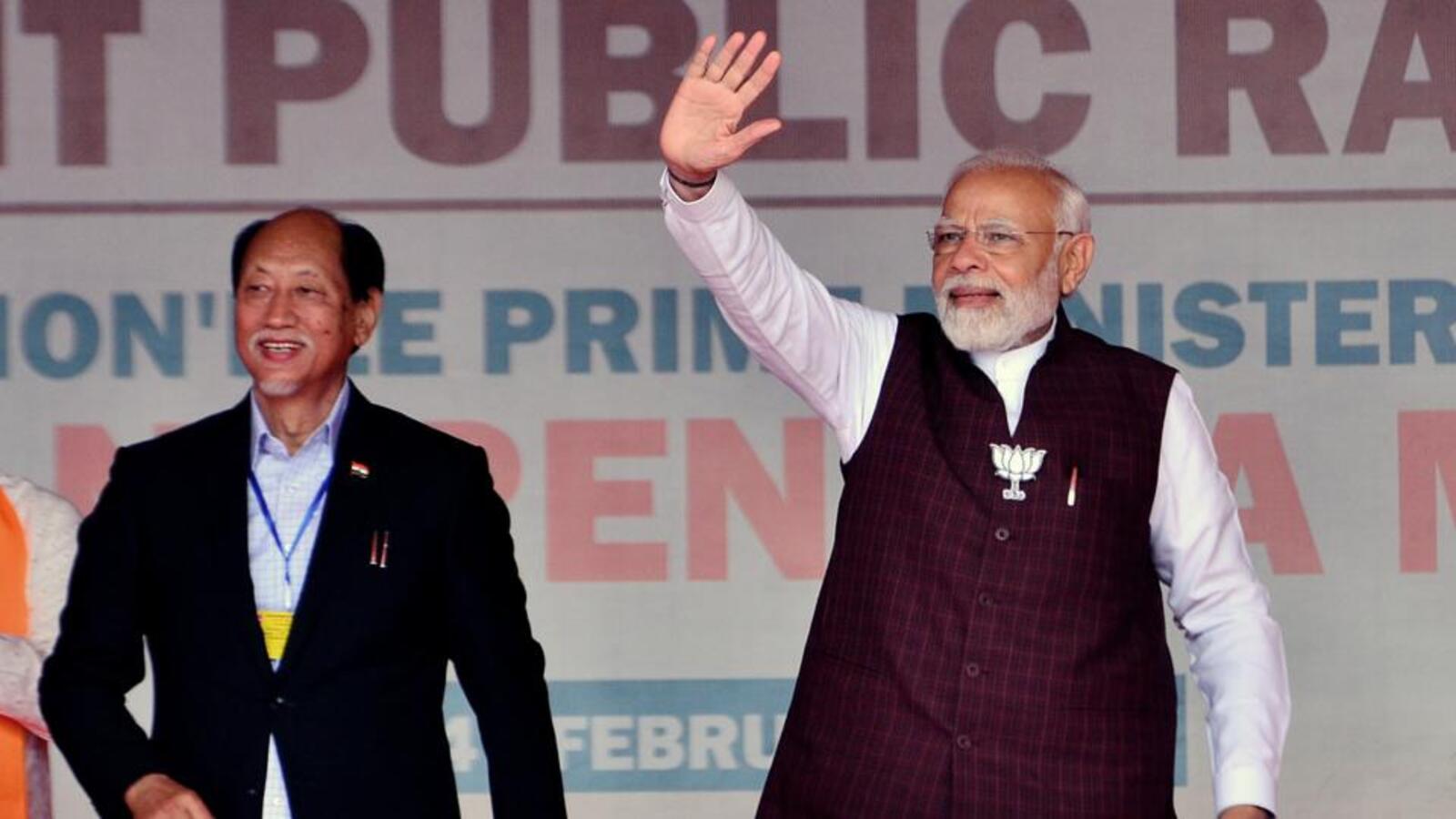Politics
Nagaland’s Political Landscape Shifts with NDPP-NPF Merger

Nagaland’s political dynamics are poised for a significant transformation following the anticipated merger of the ruling Nationalist Democratic Progressive Party (NDPP) and the Naga People’s Front (NPF). This merger, while not immediately altering the government structure, is expected to impact future electoral strategies, particularly in relation to the NDPP’s alliance with the Bharatiya Janata Party (BJP).
The proposed integration will see both parties unite under a single entity, retaining the NPF’s name and its iconic symbol, the cock. This emblem, which represents “dawn, awakening, and hope,” has deep roots in Nagaland’s political history, tracing back to the early Democratic Party of Nagaland (DPN), formed in 1963 during the Naga nationalist movement. The DPN was established to assert regional autonomy and facilitate dialogue on the Naga political issue.
Over the decades, the party has undergone several name changes, reflecting the evolving political landscape. These transitions included the United Front of Nagaland (UFN) in 1969, the United Democratic Front (UDF) in 1972, and more recently, the Nagaland People’s Front (NPF) in 2002, before becoming the Naga People’s Front in 2011. According to Achumbemo Kikon, NPF Secretary General and Member of the Legislative Assembly (MLA), despite these changes, the party’s core ideals and objectives have remained unchanged.
The NDPP, led by Chief Minister Neiphiu Rio, emerged as a splinter party from the NPF in 2017, sharing similar regional ideologies. Following its formation, the NDPP formed a pre-poll alliance with the BJP, resulting in a successful outcome during the 2018 state assembly elections, where the alliance secured 30 seats compared to the NPF’s 26. The trend continued in the 2023 assembly elections, with the NDPP-BJP alliance winning 37 seats (NDPP: 25, BJP: 12), while the NPF faced a significant decline, winning only 2 seats.
In a notable political shift, the Nationalist Congress Party (NCP) saw seven of its MLAs merge with the NDPP in May 2023, bringing the NDPP’s strength to 32 members in the assembly, thereby achieving an absolute majority. The discussions surrounding the merger between the NDPP and NPF have gained momentum, with both parties having officially welcomed the idea.
Formal decisions regarding the merger are expected soon, with the NDPP planning a general convention on October 18, 2023, followed by the NPF’s convention on October 21, 2023. While immediate government changes may not occur, the merger is likely to reshape the NDPP’s political relationships, particularly with the BJP, as Nagaland currently operates without an official opposition, with the BJP as part of the ruling coalition.
The political landscape further complicates with the unexpected success of the Congress party, which, despite not holding any assembly seats, managed to secure a win in the 2024 Lok Sabha polls, marking the party’s return to representation in Nagaland after 20 years. Meanwhile, the state’s lone Rajya Sabha seat remains occupied by BJP’s S Phangnon Konyak.
As the NDPP and NPF prepare to officially merge, stakeholders across Nagaland will be watching closely to see how this development will influence the state’s political future and electoral strategies.
-

 World5 months ago
World5 months agoSBI Announces QIP Floor Price at ₹811.05 Per Share
-

 Lifestyle5 months ago
Lifestyle5 months agoCept Unveils ₹3.1 Crore Urban Mobility Plan for Sustainable Growth
-

 Science4 months ago
Science4 months agoNew Blood Group Discovered in South Indian Woman at Rotary Centre
-

 World5 months ago
World5 months agoTorrential Rains Cause Flash Flooding in New York and New Jersey
-

 Top Stories5 months ago
Top Stories5 months agoKonkani Cultural Organisation to Host Pearl Jubilee in Abu Dhabi
-

 Sports4 months ago
Sports4 months agoBroad Advocates for Bowling Change Ahead of Final Test Against India
-

 Science5 months ago
Science5 months agoNothing Headphone 1 Review: A Bold Contender in Audio Design
-

 Top Stories5 months ago
Top Stories5 months agoAir India Crash Investigation Highlights Boeing Fuel Switch Concerns
-

 Business5 months ago
Business5 months agoIndian Stock Market Rebounds: Sensex and Nifty Rise After Four-Day Decline
-

 Sports4 months ago
Sports4 months agoCristian Totti Retires at 19: Pressure of Fame Takes Toll
-

 Politics5 months ago
Politics5 months agoAbandoned Doberman Finds New Home After Journey to Prague
-

 Top Stories5 months ago
Top Stories5 months agoPatna Bank Manager Abhishek Varun Found Dead in Well









